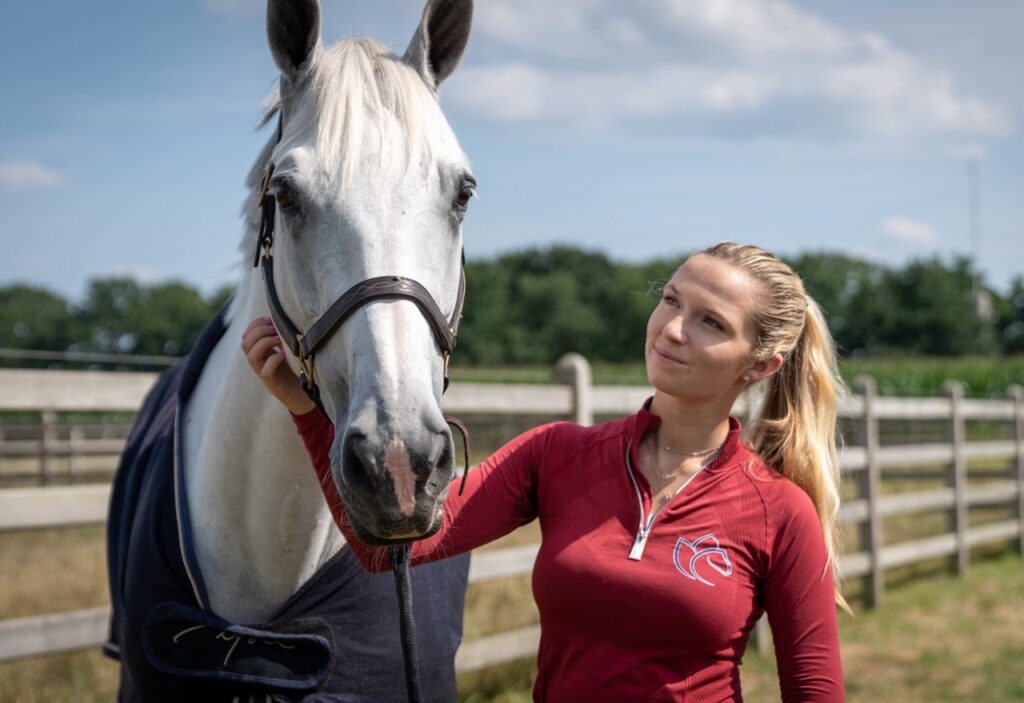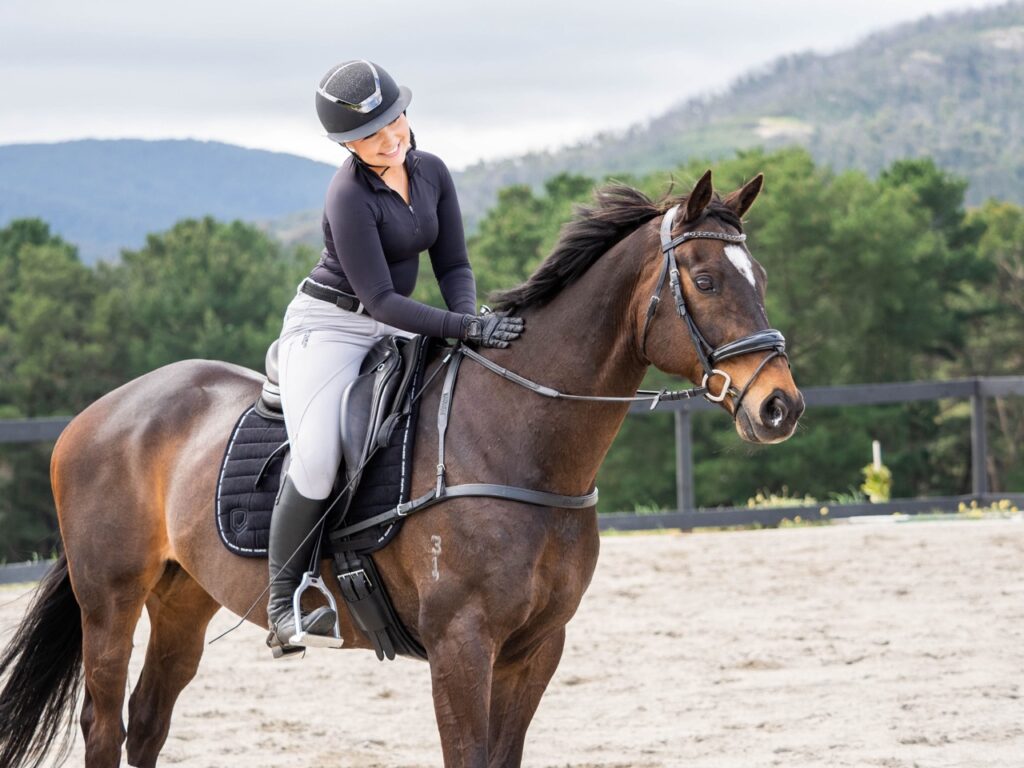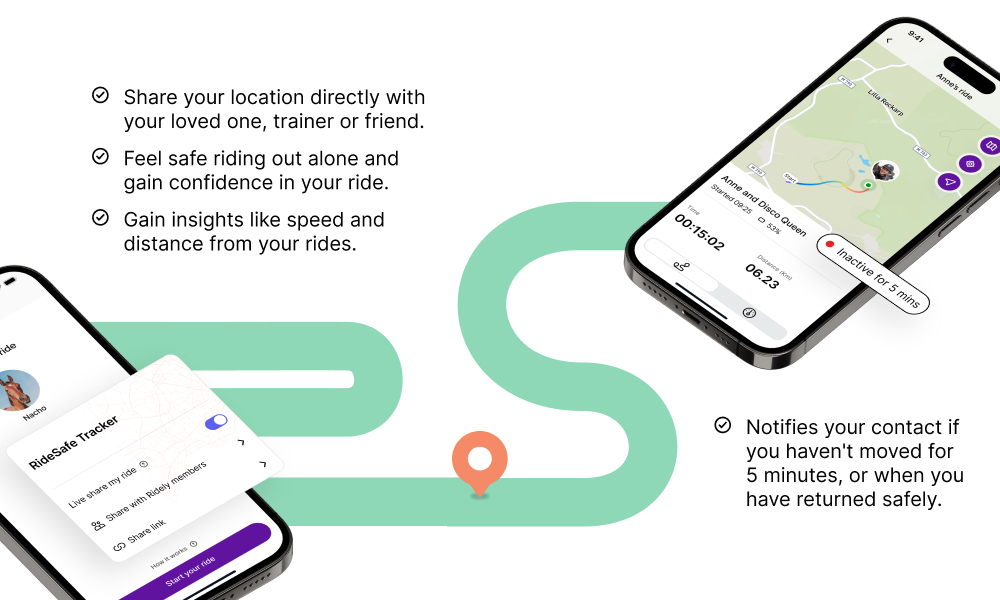8 Tips to Safely Hack and Trail Ride with Your Horse and Build Confidence

Depending on where you are located in the world – trail riding, or hacking out, is one of the most rewarding experiences you can have with your horse. It allows you to explore new terrain, bond with your horse, develop new skills and refresh the mind. However, it is really important to approach trail riding with safety in mind, especially if you’re venturing out alone or with a young or inexperienced horse.
In this article, we’ll discuss how to safely hack out, build your horse’s confidence, and provide tips for building up to riding solo or with minimal support.
1. Start with Walks: Build Familiarity and Confidence
Before you saddle up for a trail ride, it’s essential to get your horse accustomed to being outside the arena, especially if it is new to them. You can begin by taking your horse on short walks on foot with you around your property or nearby trails.
Why it’s important:
- Establishing familiarity: Walking your horse outside allows them to adjust to new sights, sounds, and smells. This builds their confidence and reduces potential stress when you eventually start riding outside.
- Establishing leadership: Walking your horse before riding also helps establish you as a calm and confident leader. Horses tend to be more comfortable with a rider they trust, and this starts with ground work and positive experiences.
Start with short, controlled walks that don’t involve much traffic or distractions. Keep the pace slow, and allow your horse to take in their surroundings without pressure, it may also be handy to utilise a longer lead rope that usual to ensure you can allow the horse to be curious, whilst maintaining suitable control in case of a spook or fright.

2. Have a Ground Person with You: Safety First
As you become more confident with your horse’s progress, the next step can be to introduce an additional layer of safety: a ground person. This person can walk alongside you on foot while you ride, giving you a backup in case of an emergency.
Why it’s important:
- Extra support: A ground person can help calm your horse if they get skittish or assist you if your horse refuses an obstacle or behaves unexpectedly.
- Emergency response: If anything goes wrong (e.g., a fall or injury), the ground person can get help or assist you with a rescue.
Even if you’re confident riding alone, having a ground person during initial trail rides, especially in more unfamiliar areas, adds an extra layer of protection and can help you troubleshoot problems before they become major issues.
3. Gradually Introduce Riding with Another Horse
Once your horse is comfortable walking outside, the next step can be to ride out with a buddy. Whether it’s another experienced horse or a reliable companion, riding with another horse gives both you and your horse a sense of security.
Why it’s important:
- Peer confidence: Horses are herd animals, so they often feel more comfortable in the company of other horses. A more experienced horse can serve as a calming influence if your horse becomes nervous.
- Social reinforcement: If your horse sees another horse moving confidently through different terrains, they will be more likely to follow suit, learning by example.
When riding out in company, choose a route that’s familiar and quiet. Stay at a comfortable pace and pay attention to how both horses are reacting to the environment, but also to each other. You’ll also have an opportunity to observe how your horse behaves in the presence of others, and this can guide your next steps to solo adventure riding.
4. Start in the Arena, Then Gradually Increase Time Outside
Even when you’re ready to hack out on your own, it’s a good idea to gradually build up your horse’s experience. Begin by riding in the arena or other controlled spaces to assess your horse’s behavior, reactions, and ability to focus under different conditions.
Why it’s important:
- Building focus and consistency: Riding in a familiar arena will allow you to gauge your horse’s readiness for outdoor trails. Use this time to practice basic maneuvers and refine your communication.
- Gradual exposure to new environments: Once your horse is working well in the arena, take them for short walks or trotting sessions just outside the arena gates. Start with 10 minutes outside, then gradually increase the time you spend out of the ring as both you and your horse become more comfortable with new environments.
Pacing the increase in exposure helps prevent overwhelm or fear, building your horse’s confidence in a step-by-step manner. Focus on keeping things positive and stress-free to reinforce good behavior.

5. Use Technology for Safety: Ride Safe Trackers
Riding alone can feel empowering, but it’s important to take precautions when venturing out on your own. The use of the Ridely RideSafe Tracker or similar is an excellent way to monitor your safety and ensure that loved ones are aware of your whereabouts.
Why it’s important:
- Real-time location tracking: A ride tracker allows your loved ones to monitor your location and movement during your ride. If something goes wrong (e.g., a fall or unexpected incident), they’ll know where to find you and can alert emergency services if needed.
- Automatic alerts for inactivity: Some trackers, such as the Ridely RideSafe Tracker, are equipped with intelligence that detects a lack of movement. If you don’t move for a set period of time, the application will alert a contact of your inactivity, giving peace of mind to you and your family.
Having this kind of safety system in place can make trail riding solo feel less risky and more secure. Technology is a valuable tool for ensuring your safety while you’re enjoying your ride.

6. Prepare for Potential Hazards: Know Your Trail
Before heading out, always assess the route you plan to take. Make sure you’re familiar with the terrain, any potential hazards, and any areas where you might encounter wildlife, traffic, or other riders.
Why it’s important:
- Risk management: Knowing the route ahead of time allows you to prepare for any challenges or hazards you may face along the way. For example, steep hills, water crossings, or busy roads all require specific riding skills and strategies.
- Trail safety: Make sure your horse is comfortable and equipped with the type of terrain you’ll be riding on, and keep an eye out for obstacles that could pose a danger to both you and your horse.
If possible, always trail ride with a map or GPS, and let someone know your planned route and expected return time.
7. Be Aware of Your Horse’s Body Language
Your horse’s behavior is a valuable tool for assessing their confidence and readiness during trail rides. Pay close attention to their body language and adjust your riding based on how they’re feeling.
Signs your horse may be uncomfortable:
- Ears back: This can indicate displeasure, frustration, or anxiety.
- Tension in the body: If your horse is tense or overly rigid, they may be nervous or not trusting the situation.
- Refusal to move: Horses that are unwilling to move forward may be scared or unsure. Take a step back and work on relaxing your horse before pushing forward.
If you notice any of these signs, take the time to reassure your horse and adjust the ride. A short break, a calm voice, or returning to a more familiar area can help your horse regain confidence.
8. Always Have a Plan for Emergencies
Even with all the preparation in the world, things can still go wrong. Whether it’s a fall, an injury, or simply losing your way, it’s crucial to have an emergency plan in place.
Why it’s important:
- Peace of mind: Knowing what to do in an emergency reduces panic and ensures that you can act quickly if necessary.
- Preparedness: Always carry a phone, a basic first-aid kit, and a means of communicating with others. Let someone know your route, your planned return time, and any emergency contacts.
Additionally, it’s helpful to know basic horse first aid and be familiar with local veterinary services should an emergency arise.
Trail riding can be a beautiful, exhilarating way to connect with your horse and enjoy the outdoors. By taking it step by step—starting with ground walks, moving to riding with companions, and building confidence in both you and your horse—you can ensure that your trail rides are enjoyable and, most importantly, safe.
With patience, practice, and proper preparation, you and your horse can enjoy countless adventures together in the great outdoors.

- Train with 10+ Olympians from home.
- Learn and make the most of your equestrian life.

Learn from Carl Hester in Ridely!
Exclusive training videos with top trainers and riders like Carl Hester are available in the Ridely library. Don’t miss out!


